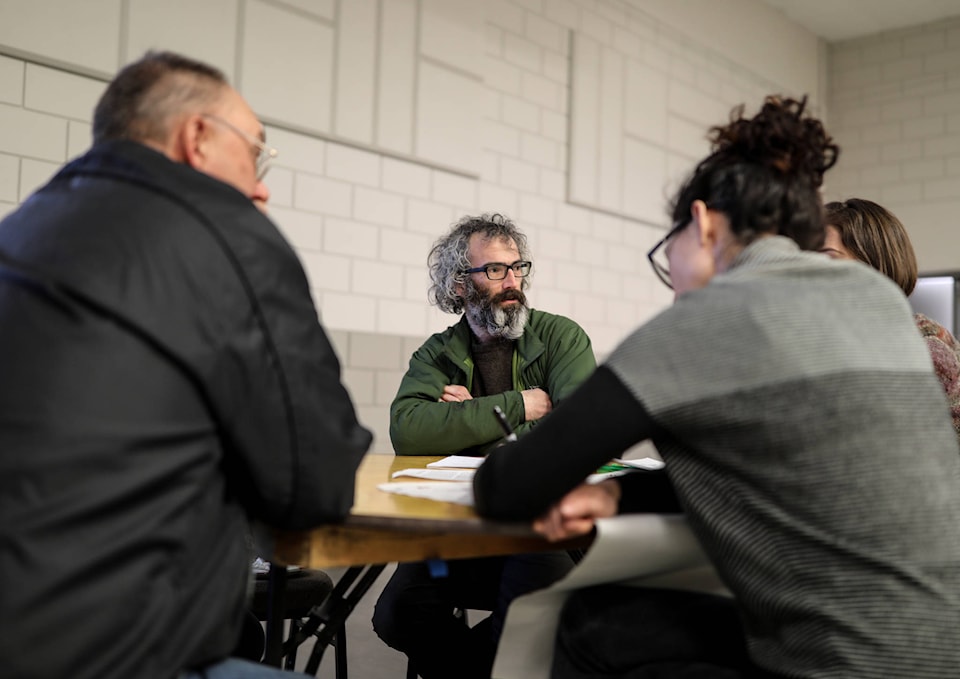James Cherry thinks the Agricultural Land Commission (ALC) is not doing enough to encourage farm production. On March 15 he voiced his opinion as part of a public forum held on the Agricultural Land Reserve (ALR) at the Revelstoke Community Centre. Cherry owns a farm on ALR land South of Revelstoke. The public forum was part of a province-wide public consultation process.
The opinions collected from the about six groups and 40 people who brainstormed and shared their ideas will be sent on to an independent committee for review, who are currently conducting a public consultation process with the end goal of “revitalizing the ALR and ALC” under the direction of the Minister of Agriculture.
The intent of the revitalization project is to encourage agricultural production, preserve the productive capacity of land in the ALR, and strengthen the administration and regulation of the ALR.
The ALR was set up by the BCNDP government of Dave Barrett in 1973, who succeeded the Social Credit government of W.A.C. Bennett in 1972. The intention of the legislation was to preserve 4.7 million hectares of land for agriculture.
At the time the ALR was considered groundbreaking, and was in part a reaction to both the birth of the modern environmental movement and the ‘back to the land’ movement, which resulted in one of the largest mass migrations in North American history.
Community Connections’ Food Security Coordinator Melissa Hemphill — who gave a roughly 15 minute address on the ALR and ALC on Thursday, and who participated in organizing and hosting the event — said the lunch and brainstorming session was intended to give local residents an opportunity to be heard by the provincial government, and to think about how the ALR and ALC impact Revelstoke.
“It’s important just to have an opportunity to talk about the ALR and how our community is affected by it and the changes we’d like to see,” said Hemphill. “I think there is a conflict between property owners within the ALR who want to keep it as it is, and those who want to see it developed.”
The topics discussed by the breakout groups were: residential uses of the ALR, farm processing and sales in the ALR, regulation of the ALR by the ALC, and resource extraction in the ALR.
The ALC is an independent administrative body that governs the ALR.
The ALC’s mandate is to encourage farm production and restrict non-agricultural uses.
About 4.6 per cent of the land base of B.C. is ALR land, says a case study published in a B.C. Open Ed textbook in 2014.
According to Hemphill, who said she read the figure cited in a recent study, less than 50 per cent of that land is used for agriculture.
The vast majority of ALR land locally is outside City Limits, South of Revelstoke, along Airport Rd.
The independent revitalization committee under the direction of the BC NDP has asked for public opinions to be sent in by the end of April.
According to the provincial government, “any legislative changes that support the revitalization of the commission and the reserve are targeted for late 2018 or early 2019.”
@Jnsherman
jake.sherman@revelstokereview.com
Like us on Facebook and follow us on Twitter
